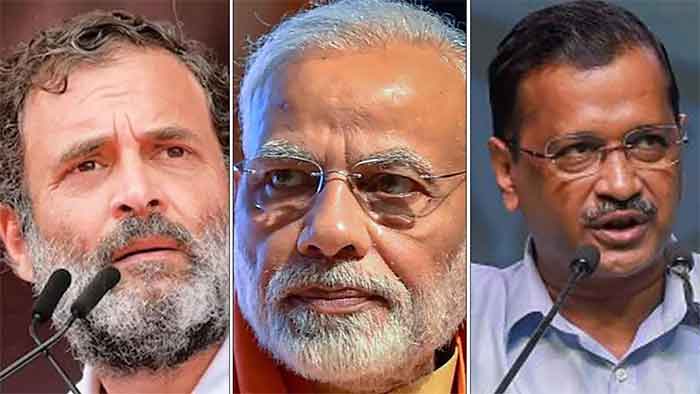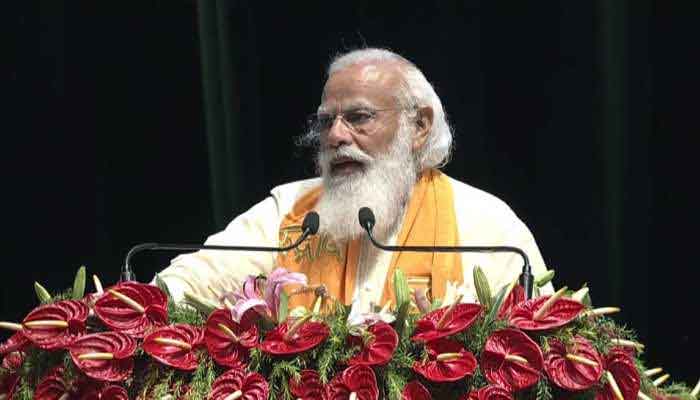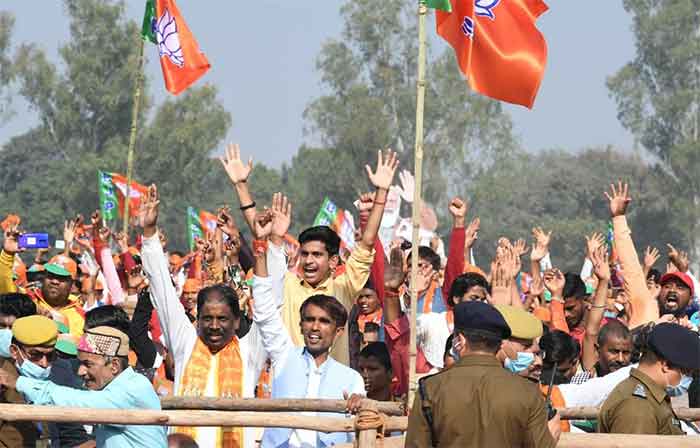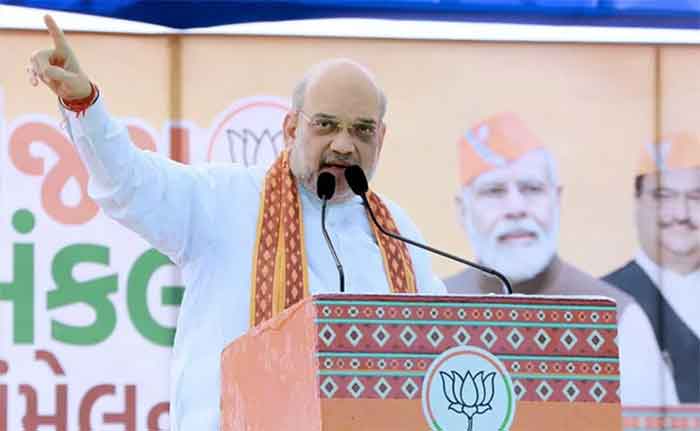
Simply electoral destiny of key parties in fray is not at stake during Gujarat Assembly elections. What also bears political significance is “leadership” of these very parties. Heading the list is of course, Prime Minister Narendra Modi. Nearly the same importance is held for another key Gujarati leader of Bharatiya Janata Party (BJP), Union Home Minister Amit Shah. Gujarat is not Congress leader Rahul Gandhi’s home state but certainly his reputation and that of his Bharat Jodo Yatra (Unite India March) is at stake. With respect to Delhi Chief Minister Arvind Kejriwal’s decision to try his party- Aam Aadmi Party (AAP)’s luck here, his political strategies- particularly those banking on aping saffron brigade’s religious cards are likely to face a strong litmus test. This implies relevance of these strategies for Gujarati voters from two angles- whether only his religious approach backed by other claims influences them or whether they choose to give them little importance as they are being made by Kejriwal (and not Modi).
However confident Kejriwal maybe of AAP’s Punjab success being repeated in Gujarat, most leaders of rival parties have reservations about electoral tide favouring him. Nevertheless, prospects of AAP candidates contesting one short of 182 seats splitting votes of key parties cannot be ignored. In fact, the same maybe said about more than 1600 candidates in the fray for these seats. Elementarily speaking, each party and/or coalition fighting from all or nearly 182 seats is facing more than 1400 candidates. In essence, this is likely to spell a tight fight for these contenders and their key leaders’ campaign.
Though chances of BJP losing Gujarat polls are marginal, the nature of probable victory poses a strong political test for BJP and its key campaigners, particularly Modi and Shah. After all, Gujarat is their home state and with their party being in command at the centre, they have set their eyes on sweeping the polls. As of now, in view of AAP’s entry into their domain and campaign of Congress faring better than expected, prospects of BJP winning with considerable majority seem slim.
BJP has held reins at centre since 2014 and in Gujarat for 27 years. In 1995, BJP won 121 seats. However in 2012, BJP won 115 seats and 99 in 2017. Congress won 61 seats in 2012 and 77 in 2017. While BJP faced a decline in number of seats in 2017 compared to 2012, there was a rise in favour of Congress. Besides, increase in percentage of votes during 2017 for Congress was higher than for BJP in comparison to preceding assembly polls. It may be noted, these trends favoured Congress despite BJP-stalwarts’ negative campaign targeting Congress and its key leaders. Importance accorded to Modi-wave at various levels did limit its success but did not totally restrict rise of Congress in the premier’s home state. And this was the trend when battle was primarily between two parties. It may also be noted, in 2017, Congress got the highest number of seats in 32 years after 1985 elections when it won 149 seats.
Compared to 2012 and 2017, as suggested by attention grabbed by his yatra, political image of Rahul Gandhi appears to be much stronger and better. The negative image propagated about him by his key rivals seems to have almost been pushed to side-lines. To a degree, prospects of this spelling better returns for Congress than in 2017 cannot be dismissed. At the same time, the extent to which this is restrained by AAP’s entry cannot be ignored. Kejriwal’s electoral show is likely to play role of damaging returns of both BJP and Congress. With it, as mentioned earlier, splitting votes, margin of victory/defeat of these two parties’ candidates may be affected.
Irrespective of seats won by AAP, even a percentage of votes secured by it may spell danger signals for BJP as well as Congress. Considering that Gujarat is home state of Modi and Shah, decrease in number of seats as well as votes gained by it may also signal lesser importance being accorded to their campaigns than in preceding elections by voters. The situation would of course be different if in addition to seats, these polls signal an increase in percentage of votes secured by BJP. That may then be regarded as a strong sign of Modi-wave still retaining its electoral as well as political strength in Gujarat. However, alarm bells would certainly ring for BJP-stalwarts if Congress registers even a minor gain in seats and votes in comparison to 2017.
Undeniably, similar goal of both BJP and AAP is to display Congress as a spent force and Rahul a weak leader. A prime agenda of their respective negative campaigns is aimed in this direction. Nature of Rahul’s march, walking with commoners as well as celebrities, also his going for morning run and other activities have in all probability considerably sunk these plans of his rivals. Nevertheless, BJP and AAP are apparently still hopeful that their verbal missiles targeting Congress will help them gaining electorally.
While BJP is banking on Modi-wave as well as its Hindutva-card, Kejriwal is hopeful of his “promises” yielding returns, Rahul apparently expects his march as well as party’s campaign at grass-roots to register gains. Kejriwal’s campaign being urban-centric may spell greater danger for BJP in these areas than for Congress which is focussing largely on rural areas. In 2017, Congress won 71 from rural areas against 63 taken by BJP. This was an increase for Congress, which secured 57 earlier and a decrease for BJP from 77.
Speculations are also being voiced about electoral verdict of 13 seats reserved for Scheduled Castes and 27 for Scheduled Tribes turning tides strongly for or against BJP. Selection of Droupadi Murmu as Indian President, the first from tribal community to hold this office, is apparently expected to favour BJP. However, the fact that she is from eastern state Odisha and Gujarat is in the West cannot be side-lined. In 2017 against 15 ST seats won by Congress, BJP failed to reach double figures.
BJP is certainly projecting an optimistic picture about Modi-wave winning votes irrespective of the possible impact of issues such as voters-fatigue, Morbi bridge-tragedy, rebellion of some members and of course rival parties’ campaigns. Kejriwal may be viewed as being over-confident about AAP’s gains in Gujarat. Rahul and his party members are probably keeping their fingers crossed about if nothing else winning more seats than in 2017. Of course, Modi is likely to remain in the lead, but if elections are projected as a tight fight, it is to be watched whether BJP wins marginally or with a sweeping majority. Voters’ verdict during these polls will not just be a test of which party heads the forthcoming Gujarat government but also of which leader’s image influences them most strongly:– Modi, Rahul or Kejriwal. And what should impact of Modi-wave be viewed as?
Nilofar Suhrawardy is a senior journalist and writer with specialization in communication studies and nuclear diplomacy. She has come out with several books. These include:– Modi’s Victory, A Lesson for the Congress…? (2019); Arab Spring, Not Just a Mirage! (2019), Image and Substance, Modi’s First Year in Office (2015) and Ayodhya Without the Communal Stamp, In the Name of Indian Secularism (2006).













































